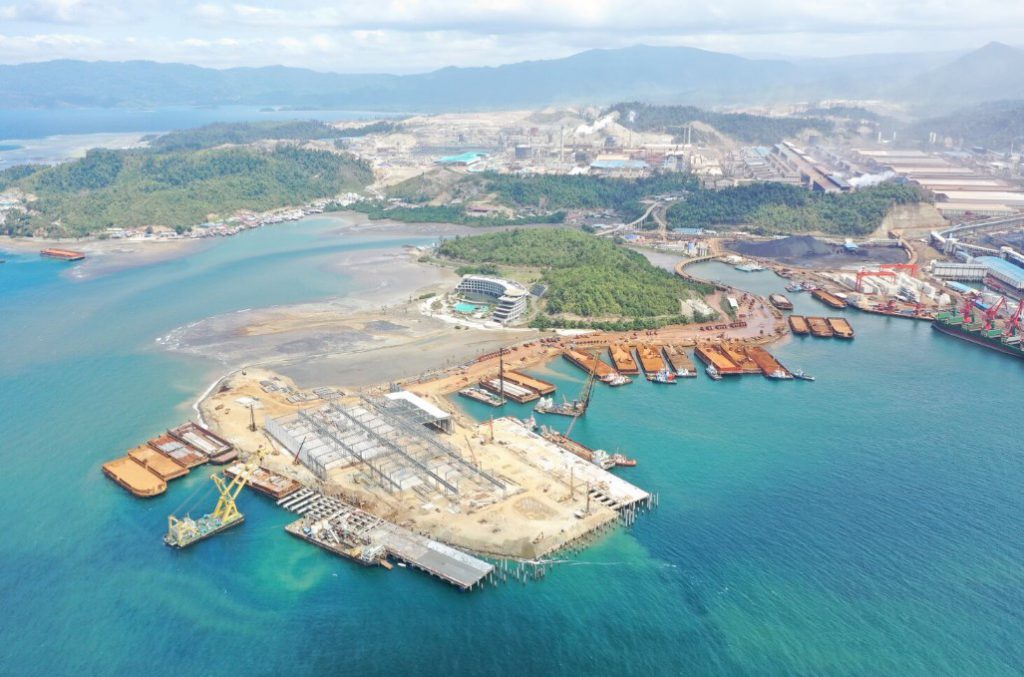Virus another wild card in nickel’s year of uncertainty

Nickel is the weakest performer in the London Metal Exchange (LME) base metals pack so far this year. It’s a dramatic change of fortune after last year’s bull rally.
At a current $13,135 per tonne London nickel is down by almost 8% since the start of January and back to where it was last July, when Indonesia announced it was bringing forward a ban on the export of nickel ore from 2022 to this year.
The ban “remains a structurally bullish event”, according to analysts at Citi, given the flow of Indonesian ore to China accounts for around 12% of global mined nickel production. (“Nickel: it gets worse before it gets better, but still a medium-to-long term buy,” Feb. 5, 2020)
However, as the title of the bank’s research note suggests, nickel bulls are now on the back foot as the coronavirus spreads its chilling effect on Chinese manufacturing demand.
The virus represents another unknown in an already complex set of calculations as to whether Indonesia’s ore ban will translate into a shortage of metal.
Wild card
Nickel and copper have taken the hardest price hits from the coronavirus because funds were long of both coming into the new year.
Speculative positioning in the London nickel market has shifted from mega long last September, when it represented 46% of open interest, to sizeable short, 10% of open interest, at the start of February, according to LME broker Marex Spectron.
The viral hit to sentiment has compounded negative optics in the nickel market in the form of surging LME stocks and collapsing spread tightness.
LME-registered stocks have mushroomed from a multi-year low of 64,174 tonnes in November to a current 208,722 tonnes. Falling stocks fed last year’s bull rally and this year rising stocks have played their part in pushing prices lower.
It’s quite possible, by the way, that what is currently “arriving” is the same material that “left” last year.
The demand hit will be multiplied if China’s nickel pig iron (NPI) producers, who process Indonesian ore, are themselves forced to cut production due to logistics challenges
Beyond the looking-glass world of LME stock movements, though, is a very real fear that the virus is going to hit nickel demand from China’s giant stainless steel sector.
China’s stainless output was already expected to weaken this year, with Citi forecasting a 0.4% contraction in nickel usage from the sector, which would be the first yearly decline since 2008.
Stainless stocks in China rose 40% to 540,000 tonnes over the course of January, according to Argonaut Securities. (“Nickel: Oversupply Risks”, Feb. 10, 2020).
The Shanghai Futures Exchange’s new stainless contract fell to 12,820 yuan per tonne at the start of February, its lowest level since launch last September.
The virus and the widespread travel restrictions imposed to limit its spread are expected to accentuate both seasonal and cyclical weakness in China’s stainless sector.
The demand hit will be multiplied if China’s nickel pig iron (NPI) producers, who process Indonesian ore, are themselves forced to cut production due to logistics challenges.
Conversely, both stainless and nickel demand will be lifted, if, as widely expected, Beijing at some stage unleashes more stimulus to reinvigorate economic growth.
China’s loss, Indonesia’s gain
The virus also directly impacts one of the key supply-side drivers already in play in nickel’s confusing fundamental landscape.
China’s nickel pig iron sector is being closely watched by the market as it tries to gauge the effects of Indonesia’s export ban.
Chinese NPI run rates are expected to decline over the course of 2020 as ore shipments from Indonesia cease and port stocks are drawn down.
Citi is forecasting a 90,000-tonne drop in Chinese production to 490,000 tonnes this year.
Quite evidently, any forecast right now comes with a heightened degree of uncertainty thanks to the coronavirus.

The second core question facing nickel traders is to what extent Indonesia’s own NPI producers can ramp up production to compensate for reduced supply in China.
Indonesia’s ore ban is explicitly designed to push miners down the value-add chain and it has already borne considerable fruit.
The country’s NPI production doubled last year, according to the Ministry of Energy and Mineral Resources, and investment is still pouring into new capacity.
Citi notes “a wide range of views” for Indonesian NPI production this year, ranging from 500,000 to 600,000 tonnes.
This already marks an upwards revision from a consensus at the end of 2019 that it would be between 400,000 and 500,000 tonnes, the bank notes.
Analysts at Wood Mackenzie suggest that the scale of current investment could mean capacity rising to 660,000-800,000 tonnes per year by the end of 2020.
If so, “whatever happens to NPI productivity in China may ultimately prove inconsequential.” (“Uncertainty to cloud global nickel market outlook in 2020,” Jan. 29, 2020)
That may be something of a bearish outlier in a generally bullish analyst consensus, but it illustrates the range of opinion out there.
Electric dreams on hold
Nickel remains beholden to the stainless steel cycle, particularly that in China, even though its usage in lithium-ion batteries continues to excite investors.
Batteries, however, still represent a relatively small component of the metal’s usage profile.
Moreover, both battery and broader automotive supply chains have also been heavily disrupted by the coronavirus, meaning negligible short-term offset to any stainless steel sector weakness.
Batteries remain a long-term demand growth driver for nickel. Combined with the Indonesian hit on supply, it is why most analysts, including Citi, remain positive on the metal’s price prospects.
“Lost ore supply is set to drive producer cost inflation, on top of which there is room for speculative positioning to rise ahead of a 2021 refined (metal) deficit,” according to Citi, which is forecasting the price to hit $15,000 per tonne over a 6-12 month time horizon.
However, “nickel prices are likely to remain soft in the near term as the coronavirus pushes back a recovery in Chinese stainless output and the re-stocking of nickel/NPI units,” the bank cautions.
It’s already becoming clear that the coronavirus is going to act as an accelerator in an already volatile mix of price drivers.
Right now the LME price is consolidating after sliding to a six-month low of $12,510 last month. Don’t expect the pause for breath to last long.
($1 = 6.9697 Chinese yuan renminbi)
(By Andy Home; Editing by David Evans)
More News
{{ commodity.name }}
{{ post.title }}
{{ post.date }}



Comments